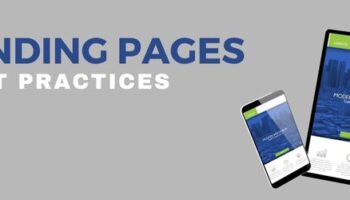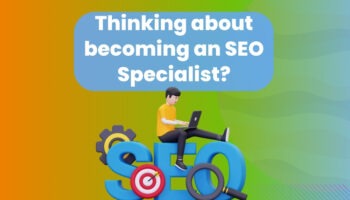So you created an excellent ad campaign, and people click on it, but there are no conversions. Bummer, right? Well, the reason could be your landing page. Every click counts in the online marketing world, and if your landing page needs to be better designed, you might need more conversions than you were hoping for. Don’t worry, though – with a well-designed and optimized landing page, you can increase your conversion rate and get the desired results.
Get ready to supercharge your landing pages! This guide will provide actionable tips and tricks to help your pages become conversion champions. So, let’s dive in and get started!
Table of Contents
1. Clarity is the key to get in: Define Your Value Proposition
Effectively communicating your value proposition is crucial for the success of any landing page. This objective requires answering two pivotal questions: What specific problem do you solve for your target audience, and what tangible benefit do you offer them? It is crucial to prominently highlight your unique selling proposition (USP) within the first few seconds of a visitor’s experience. This strategic approach captures their attention, minimizes the risk of confusion, and ultimately promotes successful conversions.
2. Attention Grabbing Headline in your Landing Page: Hook Them In
Your landing page headline is like a giant digital billboard competing for attention in a world full of information. To make it stand out, you must use three key ingredients: strong action words, targeted pain points, and a clear solution promise. Avoid using fancy words and keep your headline brief while showing off your brand’s personality.
Remember that your headline is not just the first impression. It sets the tone for your entire conversion journey. Keep testing, refining, and tweaking until you find the words that really connect with your audience.
If you create a magnetic and informative headline, you can transform your landing page into a conversion champion. Your headline shouldn’t just inform, but also make you the hero by offering a solution that solves your audience’s pain points.
3. Visual Appeal: Show, Don’t Just Tell
As humans, we are visual creatures. High-quality images and videos can capture attention, build trust, and reinforce your message. Use visuals that resonate with your brand and target audience, showcasing your product or service in its best light.
Focus on:
- Brand alignment: Choose visuals that match your brand identity and resonate with your audience.
- Targeted appeal: Use visuals that connect with your specific audience’s interests and challenges.
- Product/service showcase: Demonstrate the value of your offering realistically and enticingly.
- Variety: Mix up images, videos, infographics, or GIFs to keep things engaging.
- Mobile optimization: Ensure visuals load quickly and display well on all devices.
- High quality: Invest in good visuals to avoid undermining your credibility.
- Context: Use captions or overlays to explain visuals and their connection to your message.
- A/B testing: Experiment with different visuals to see what drives conversions best.
4. Benefits Over Features: Speak Their Language
Need for clarification on the technical talk! Instead, shine a spotlight on the benefits your product or service offers, addressing the specific needs of your audience. Think about how your offering can improve their lives and communicate that impact in clear, everyday language they can readily understand. Leave the industry buzzwords at the door – focus on genuine connection and real-world results.
Here’s how:
- Become a mind reader: Put yourself in the shoes of your ideal customer. What challenges do they face? What dreams do they have? Craft your message to resonate with their unique situation.
- Speak their language, not yours: Ditch technical jargon and complex sentences. Opt for clear, concise language they can easily digest and connect with.
- Focus on “what’s in it for them”: Highlight the benefits and value of your product or service. How will it make their lives better, easier, or more enjoyable?
- Show, don’t just tell: Use storytelling, examples, or case studies to illustrate the positive impact your offering can have. Make it relatable and real.
- Think “benefits,” not features: While features are important, don’t get bogged down in technical details. Focus on how those features translate into tangible benefits for your audience.
5. Frictionless Forms: Make Converting Easy
Filling out lengthy forms is painful and creates frustration. Refrain from making your visitors go through that pain. Instead, create short, user-friendly forms that are optimized for mobile devices.
Here’s the key:
- Minimalism is the best: Collect only the essential information you truly need. Every extra field is a conversion roadblock.
- Simplify the journey: Use clear labels, instructions, and error messages that everyone can understand.
- Mobile matters: Ensure your forms are responsive and easy to navigate on all devices, especially smartphones.
- Cater to preferences: Depending on user preference, offer multiple ways to convert, like sign-up via email or phone number.
- Make it visually appealing: Ditch the drab text boxes and go for a clean, modern design that complements your brand.
Remember, your forms are gateways to conversions, not interrogation chambers. You can turn those hesitant clicks into delighted conversions by prioritizing simplicity, mobile-friendliness, and user experience.
6. Social Proof: Leverage Trust and Credibility
Don’t just say your product’s amazing – prove it! Showcase customer reviews, testimonials, and trusted brand logos throughout your landing page. This “social proof” builds trust and boosts conversions.
Think:
- Hero Section: Grab attention with impactful reviews or logos.
- Benefits: Reinforce claims with happy customers enjoying your benefits.
- Call to Action: Testimonials can nudge hesitant visitors towards converting.
Keep it simple:
- Use clear visuals and short snippets.
- Focus on relevant benefits.
- Spread social proof strategically.
7. Compelling Call to Action (CTA): Tell Them What to Do
Think of your landing page as a busy marketplace. You’ve attracted potential customers with your attractive display, presented your products, and answered their questions. But what comes next? You gotta have a clear and persuasive call to action (CTA) to lead them to the final step: making a purchase. Keep them from wandering around aimlessly, not knowing what to do next.
Remember, your CTA is the culmination of your landing page’s efforts. By using simple yet impactful language, bright colors, and a little bit of urgency (if it fits), you can turn clicks into sales and transform window shoppers into loyal customers.
8. Mobile Optimization: Cater to the Thumb Generation
Forget the desktop days, over 50% of website traffic now arrives via smartphones and tablets. Your landing page needs to be mobile-ready, and if it is not, you’re missing out on a massive chunk of potential customers.
Here’s how to ensure your landing page shines on every screen:
- Embrace responsiveness: Ditch the one-size-fits-all approach. Your landing page needs to adapt fluidly to all devices, from tiny phones to expansive desktops.
- Optimize for speed: Mobile users are impatient. Ensure your page loads lightning fast, using techniques like image compression and code minification.
- Thumb-friendly design: Keep things big, bold, and easy to tap. Avoid tiny text and intricate navigation that requires zooming in.
- Test, test, test: What works? Use mobile testing tools and real devices to ensure a smooth and intuitive experience across all platforms.
Remember, mobile isn’t optional, it’s essential. By prioritizing a responsive and optimized landing page, you’ll unlock the full potential of your online presence and conquer the thumb generation.
Learn more about Website Mobile Optimization And Why Is It So Important.
9. A/B Testing: Iterate and Optimize
Your landing page isn’t just a static advertisement; it’s a dynamic laboratory brimming with conversion potential. A/B testing is the key that unlocks this potential, allowing you to experiment with different elements and discover what truly resonates with your audience. Think of it as an ongoing scientific expedition, where you constantly gather data, refine your hypotheses (landing page variations), and ultimately evolve your page into a conversion champion.
Don’t be fooled by the initial launch – that’s just the first chapter in your landing page’s story. The real magic happens through continuous optimization. Here’s why:
- Audiences are dynamic: Their needs, preferences, and even the devices they use can shift over time. A/B testing allows you to stay ahead of the curve, adapting your page to resonate with the ever-evolving landscape.
- No one-size-fits-all solution: What works for one audience might not work for another. A/B testing helps you identify the unique elements that resonate with your specific audience, maximizing your conversion potential.
- Data is your friend: Gone are the days of guessing what works. A/B testing provides concrete data showing which variations perform better and why. This data-driven approach eliminates subjectivity and ensures you make informed decisions based on user behavior.
- It’s an iterative process: Optimization isn’t a one-time fix; it’s a continuous journey of discovery. A/B testing allows you to make small, incremental changes, track their impact, and build upon your learnings. Each test is a stepping stone towards a more optimized and effective landing page.
10. Analytics & Tracking: Measure Your Success
Don’t fly blind! In the world of landing pages, data is your guiding light. Tools like Google Analytics offer a treasure trove of insights, revealing how visitors interact with your page and whether they convert. It’s time to shed the guesswork and embrace the power of data-driven optimization.
Start by tracking essential metrics like:
- Conversion rate: This is the holy grail, measuring the percentage of visitors who take the desired action (signup, purchase, etc.). Track trends and compare across variations to see what truly drives conversions.
- Clicks: Where are visitors clicking? Are they engaging with CTAs, forms, or other interactive elements? Analyze click behavior to identify areas of interest and potential roadblocks.
- Form submissions: Are forms a conversion point? Monitor completion rates and identify drop-off points to streamline the process and boost submissions.
- Bounce rate: How many visitors leave without interacting? Analyze bounce rates by traffic source and landing page element to identify areas needing improvement.
Remember, data is more than just numbers:
- Dig deeper: Don’t just glance at surface-level metrics. Segment your data based on demographics, device type, and other factors to understand behavior.
- Identify trends: Look for patterns and correlations to uncover what truly influences conversions.
- Actionable insights: Don’t just analyze, act! Use your findings to make data-driven decisions about A/B testing, content changes, and overall page optimization.
Think of your analytics as your personal conversion consultant. The more you utilize them, the deeper you understand your audience and the more effectively you can tailor your landing page for success. Remember, continuous data analysis is a key ingredient in the recipe for conversion optimization.
Remember
Creating high-converting landing pages is a thrilling dance between precise science and creative artistry. Follow these actionable tips, but remember to infuse them with your brand’s unique personality and your audience’s specific needs. When you tailor these techniques to your offer and resonate with your ideal customers, you’ll witness a beautiful transformation: clicks morphing into leads, leads blossoming into sales, and sales culminating in a sea of happy, loyal customers. Now, embrace the art and science of conversion, and watch your landing page transform into a conversion champion!
Bonus Tip: Stay inspired by studying successful landing pages in your industry. Take note of what they do well and adapt elements to your own strategy.
Do you have any additional tips for creating high-converting landing pages? Share them in the comments below!




